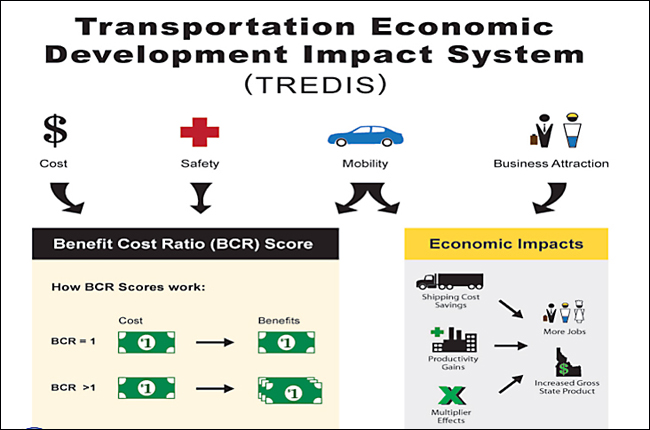

Leadership Summit TREDIS team
better able to prioritize projects based on Return
![]()
Every year, the citizens of Idaho trust ITD to improve the transportation system – to make it safer and less congested. How do we decide to spend that hard-earned money; which projects to fund and which ones not to? There’s never before been a way to make a good, system-wide decision.
The TREDIS (Transportation Economic Development Impact System) team at the recent Leadership Summit gave notice that times are changing.
Until recently, ITD had no consistent and transparent way to compare highway improvement projects, and more importantly, no way to know a project’s return on investment
ITD decided on the TREDIS software, in part to meet a federal requirement that state departments of transportation demonstrate a quantifiable way to show all project benefits in order to be eligible for grant funds.
By implementing TREDIS in 2015, ITD got ahead of that mandate by at least a year.
But “just like buying a pair of skis doesn’t make you a skier, buying an economic forecasting model is only step one,” said TREDIS team lead Greg Dietz. “From there, we had to learn the model and then build a process to analyze projects from all over the state.”
TREDIS primarily does two things - it calculates a project’s benefit-cost ratio (BCR) and it forecasts economic impacts.
“What we’re looking for are projects with a BCR of greater than 1. That means simply – if a project costs $1 million, we’re getting more than $1 million in benefits.”
Dietz said that in the first year using TREDIS, they had an average BCR under 2, but now have a BCR of about 5 — a clear indication that ITD is being good stewards of taxpayer money…and getting better all the time.
“It’s just one tool – but it’s a powerful, tool - to allow decision makers to better understand how each project benefits Idaho,” Dietz said. “It’s also been gratifying to see that excellent projects are being funded all over the state – that a safety project in rural Idaho can be just as beneficial as a congestion project in the Treasure Valley.”
“We look at how safety changes; are we reducing crashes? We look at how mobility changes; has congestion been reduced? And what if anything do these changes mean to the economy – have we created jobs and increased gross state product?” Dietz added.
ITD is responsible for allocatingmillions to Idaho’s roads and bridges, so it is incumbent on the department to safeguard those funds.
The TREDIS model is helping them do just that.

Published 11-02-18